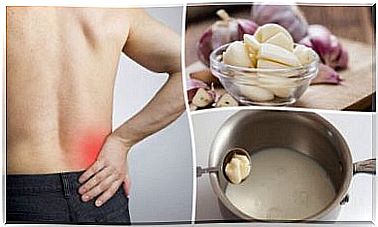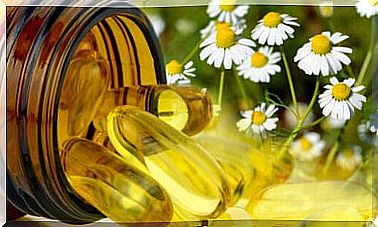Make Your Own Rosemary Soap
Our recipe for rosemary soap makes a good gift
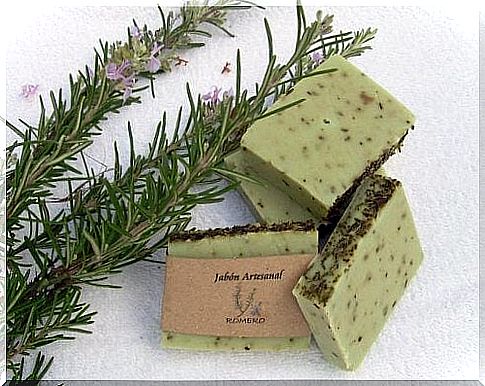
If you want to make this rosemary soap yourself, you should make it at least three weeks before the gift date , such as Christmas, so that the rosemary soap has time to fully mature.
Rosemary soap with a spicy scent
The rosemary soap is suitable for men and women alike. Their spicy scent invigorates and refreshes and brings back memories of holidays in the Mediterranean.
The scent has a stimulating and invigorating effect and puts you in a good mood in the shower in the morning.
If you make the rosemary soap yourself, you can be sure that no cheap or synthetic raw materials have been used and that you get a purely natural product, in which only you determine what is contained.
You should use dried rosemary sprigs to make the rosemary soap, the needles from the spice shelf of your supermarket are ideal.
You can also get the rosemary oil in health food stores or health food stores. Make sure that it is pure essential oil and not cheap scented oil with a synthetic rosemary aroma!

Why you should use natural soaps
Soaps that you make yourself and those that have been labeled with a natural cosmetics seal contain no harmful ingredients and were made in the traditional way.
In soaps from conventional production there are often ingredients that should be viewed as critical.
Many of them are allergenic, i.e. allergenic, are suspected of causing cancer and pollute the wastewater with substances that are not degradable. In soap, for example:
- EDTA (preservative and emulsifier)
- Azo dyes
- Aggressive surfactants
- Film-forming agents (e.g. Styrene / Acrylates Copolymer)
- Chemical skin conditioners
EDTAs are extremely slow and poorly degradable and pollute water.
Azo dyes are suspected of being carcinogenic.
Chemical skin conditioners use chemistry to ensure that the skin feels soft after use, even though it has not been cared for.
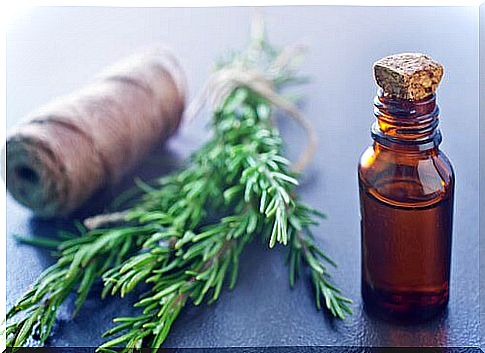
Rosemary soap recipe
You only need a few ingredients to make your own soap. Use this recipe as a basic recipe for many other soap creations!
For rosemary soap you will need:
- 250g coconut oil
- 350g olive oil
- 87g sodium hydroxide
- 200ml rosemary brew
- 150g rosemary (dry)
- 1 tbsp rosemary essential oil
Please weigh the exact amount of sodium hydroxide with an electronic scale or have it weighed exactly for you in the store or pharmacy. A gram is also crucial here!
The aim is to use the mixing ratio of sodium hydroxide to oil to produce a slightly “over-greased” soap that moisturizes and cares for your skin. Using too much sodium hydroxide will dry out your skin.
Preparation for soap making
To make your own soap, please use rubber gloves, plastic spoons, and plastic cups.
Please do not use containers or utensils made of glass or aluminum, as the lye can damage them.
Protect yourself and your clothes from the suds with an apron and safety glasses, and line the table or kitchen counter with newspapers to avoid damaging the surface.
Decide on a mold that you want to pour the soap into.
Silicone baking molds for muffins are suitable for this, but also a baking sheet that you line with freezer bags in order to later cut the soap into pieces.
First steps
Now it gets tricky, you make the lye from sodium hydroxide and absolutely cold distilled water.
To do this, place a large saucepan in cold water that you left in the sink. Then wear an apron, rubber gloves, and safety glasses and mix the water with the sodium hydroxide.
The liquid becomes hot and steamy by itself, please do not breathe in! Stir well until the lye is as clear as water. Then let the lye cool down.
Put the oil in a saucepan and heat it gently. Check that the lye and oils are the same temperature. “Hand warm” (around 35-38 ° C) is ideal.
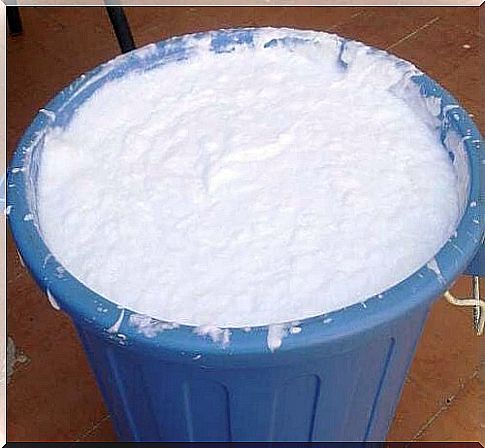
Stir, stir, stir!
Then carefully pour the lye little by little into your oil mixture, stirring constantly. Don’t forget your safety glasses, gloves and apron!
Then you have to stir like a world champion or whip the mixture vigorously with an electric hand blender for at least a minute until the mixture thickens.
The consistency is reminiscent of extra thick mayonnaise or pudding when you’re done. What you then have in the pot is called “soap slime” – and it looks like it.
Now fill the slime into prepared containers. Make sure that the saponification is not yet complete and that heat is required.
It is best to place the container or containers in an insulated box or in a cardboard box insulated with a pillow.
The slime will heat itself to around 60 ° C, you just have to make sure that it doesn’t cool down too quickly.
After 24 hours, the soap will be ready for you to remove it from the molds or cut into slices.
The soap looks good now, but it is not yet ripe and you cannot wash yourself with it.
Place the soaps in a cool place for at least three to four weeks, or longer, so that they mature. The longer the soap matures, the creamier and milder it becomes!


